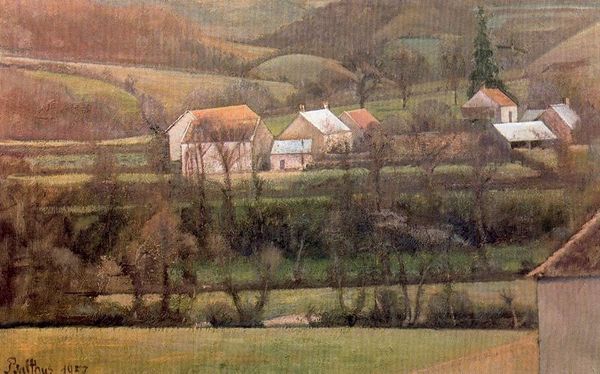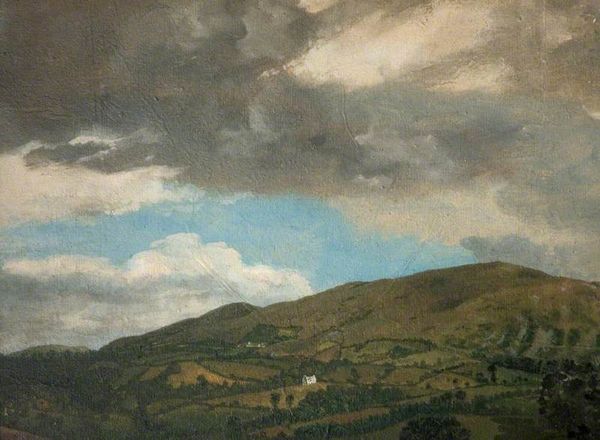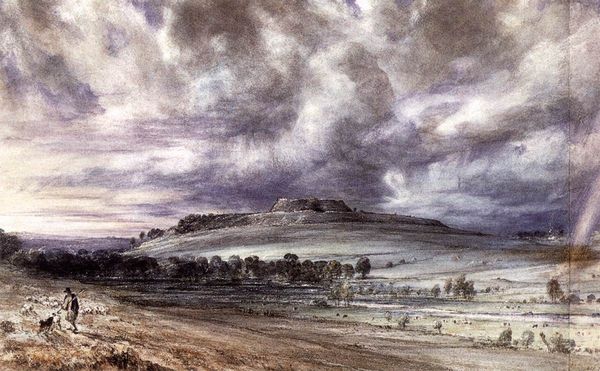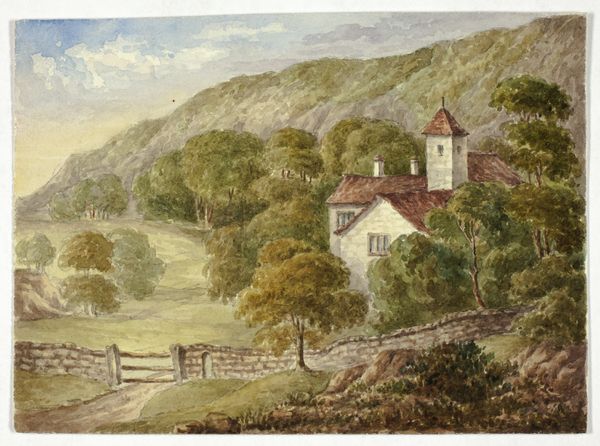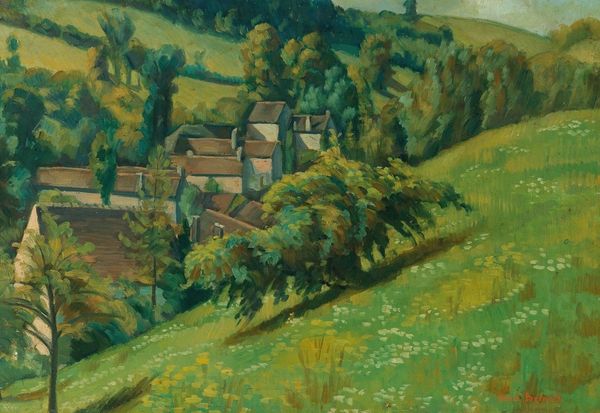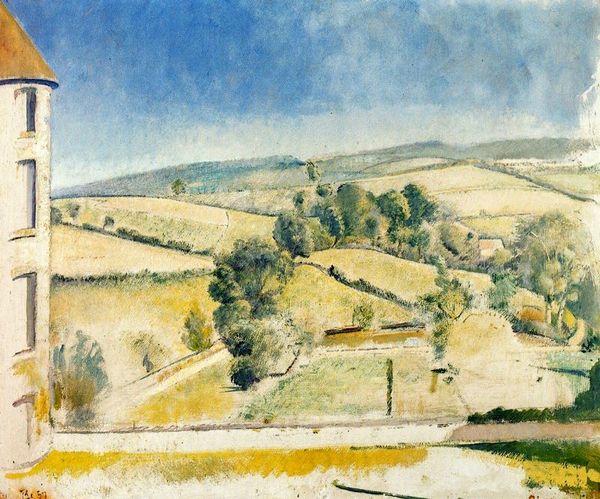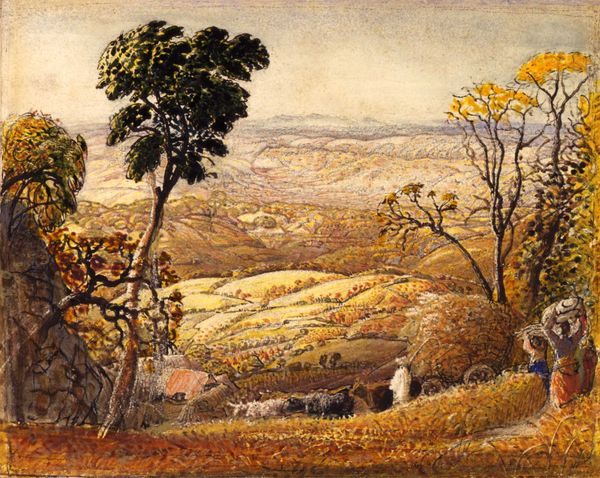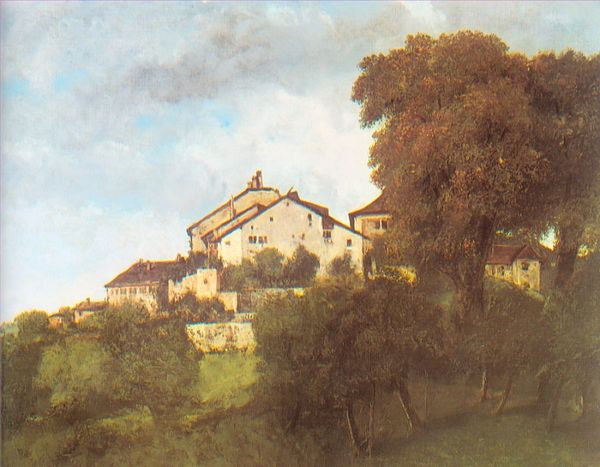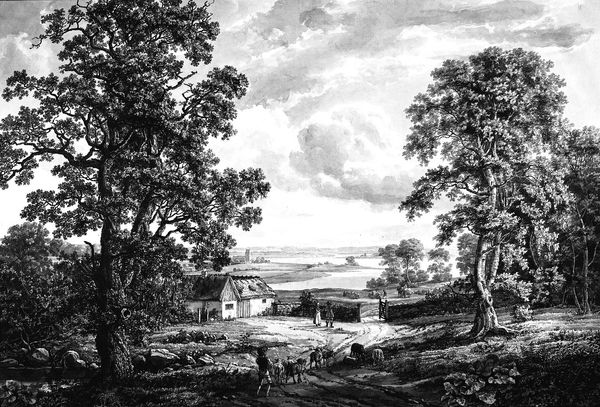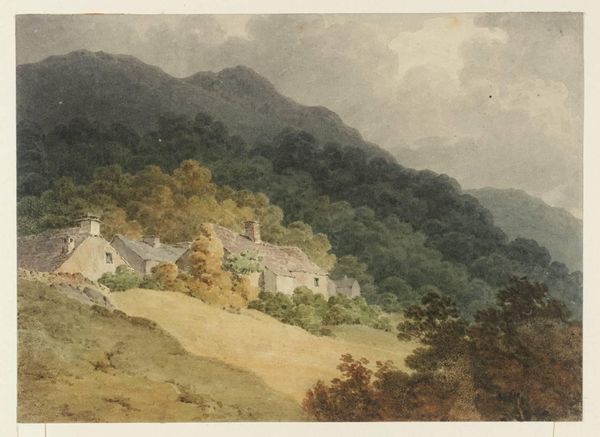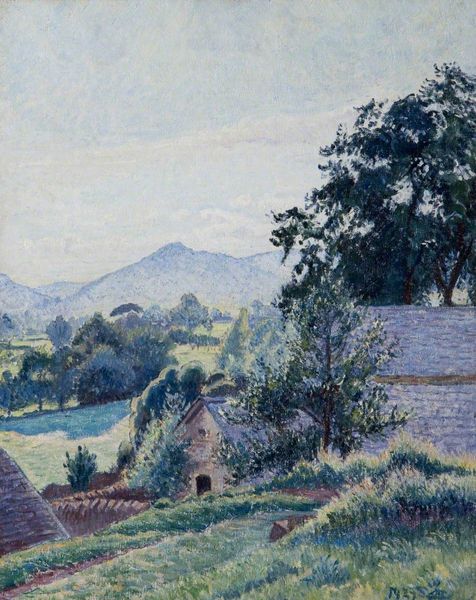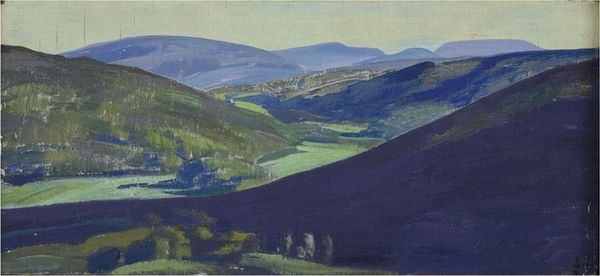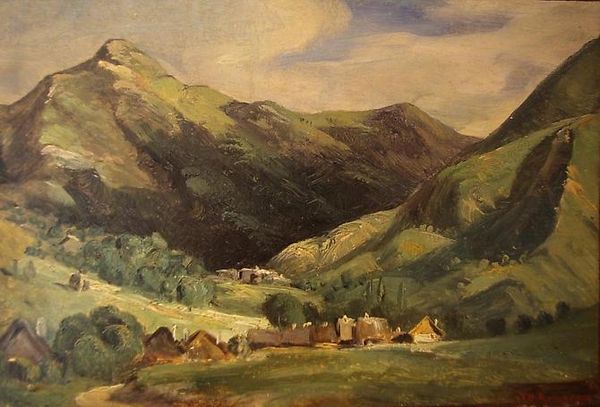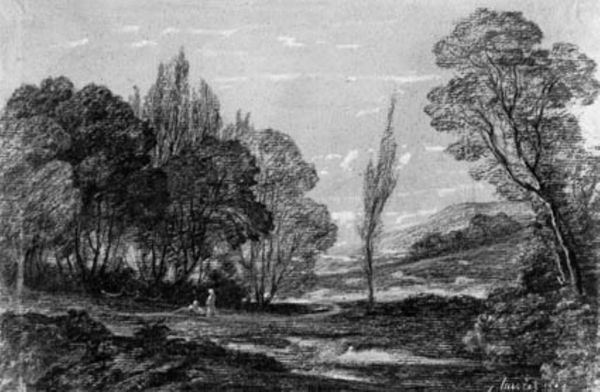
tempera, painting, plein-air, impasto
#
tempera
#
painting
#
plein-air
#
landscape
#
impasto
#
coloured pencil
#
realism
Dimensions: 100 x 50 cm
Copyright: Balthus,Fair Use
Curator: Balthus's "Pastoral," dating from 1960, presents us with a compelling study in landscape. The formal qualities immediately strike me: the use of tempera and perhaps plein-air painting lend it a certain immediacy. What's your take on its overall impact? Editor: It’s undeniably serene. But look at the meticulous divisions within the fields—it’s a controlled, almost mapped-out landscape. I'm drawn to the suggestion of intense manual labor that shaped such a vista, a labor somewhat romanticized in its soft colors. Curator: Indeed. The composition, with its carefully structured planes and subtle variations in color, directs the eye through the painting. Notice the recurring lines, both delineating fields and providing structural unity. They serve a vital role in organizing the pictorial space, guiding the gaze into the distance. It’s a symphony of angles. Editor: But it also reflects the material conditions— the division of land, ownership, use. Those fields weren't simply there. People tilled, planted, harvested. And consider the structure—that building looks more like a work site than a bucolic farmhouse. It makes you think about the social framework inherent in this "pastoral" scene. Curator: The application of paint itself, including elements of impasto in the foreground, deserves attention. How do you read its use of medium? Does it reinforce the narrative? Editor: It complicates it! The almost primitive impasto, laid upon what appears to be plain-air practice, highlights the inherent physicality of rural labor. And those are what drive economies and cultures. They are not so picturesque after all! It almost undermines the idyllic fantasy implied by the title. Curator: Interesting observation. This push and pull is where its strength truly resides, perhaps. The structure creates visual delight, the materiality nods to something profound... Editor: I concur. This artwork reminds me of the quiet dignity found in labor itself, challenging the distance implied by traditional "pastoral" scenes. A wonderful way to conclude. Curator: Quite so. A balanced look at how form meets meaning.
Comments
No comments
Be the first to comment and join the conversation on the ultimate creative platform.
